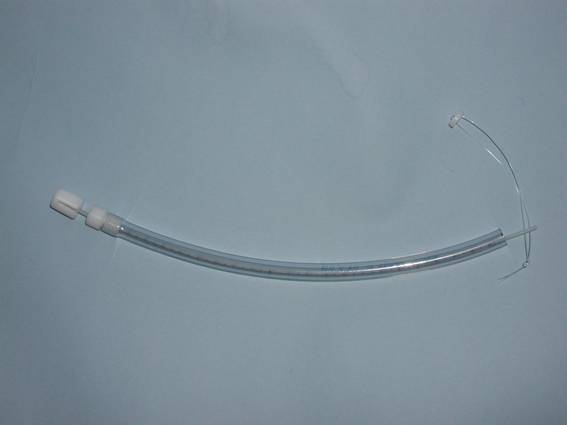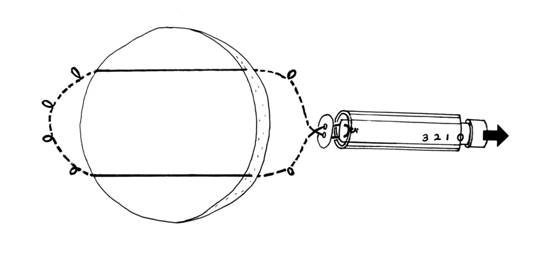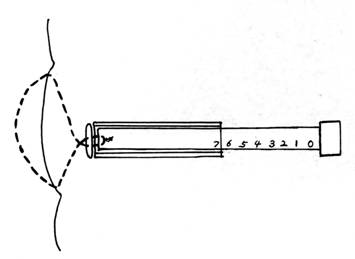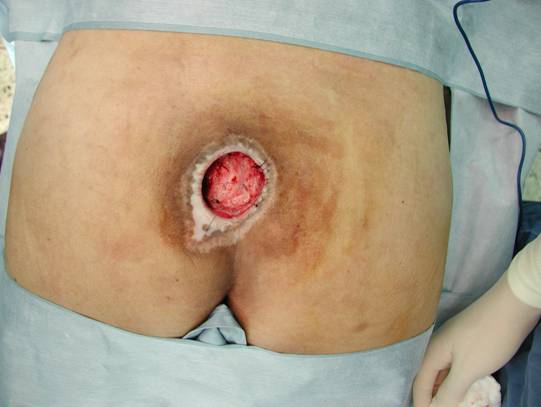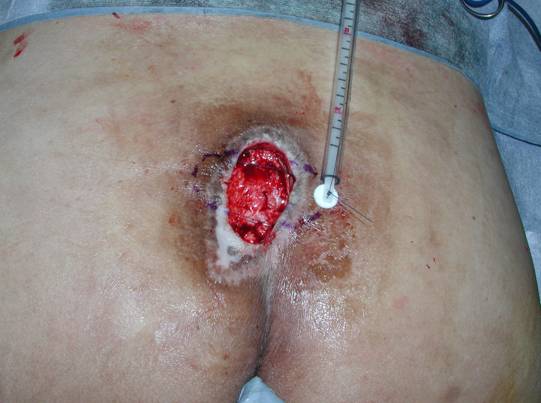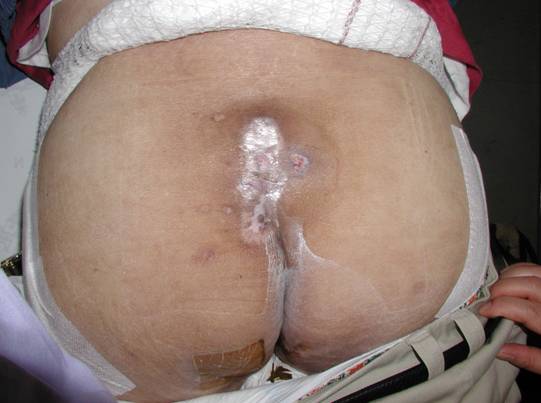Wednesday, October 13, 2004 - 9:14 AM
5955
A New Wound Closure Obtaining and Maintaining Device Using Serial Tightening of Loop Suture and its Clinical Applications for 21 Times in 15 Consecutive Patients as Long as 102 Days
A device which can both obtain and maintain wound closure using serial tightening of loop suture was developed. The device consists of three components : A hollow plastic cylinder with one-way locking mechanism, a flat plastic strip which passes in though the cylinder in one-way and a plastic cushion between the cylinder and skin. (Fig. 1) Body of the device is made of soft cylinder and hard strip. This difference in flexibility enables the device to absorb impacts of position change and daily activities while the device preserves tension of loop suture to maintain closure of wound.
After debridement or excision of lesion, passage of 0-1 nylon suture is designed. A nylon suture is threaded through deep dermis along the design across wound and both ends of the suture are tied to make a loop and secured on two holes at one end of plastic strip. The plastic strip which holds knot of loop suture is pulled away from skin through hollow plastic cylinder to approximate wound margins gradually. (Fig. 2)
From Jan. 2003 to Aug. 2003, the device was applied for twenty-one times in fifteen consecutive patients. Mean stretching amount measuring 42.0 mm was done for the defects with mean shortest dimension of 24.5 mm (from 2 mm to 60 mm). All twenty-one wounds were closed primarily (21/21=100%) and the closure was maintained successfully for eighteen wounds (18/21=85.7%) in thirteen patients (13/15=86.7%). The device had been left in situ for as long as 102 days (average application time of 34.5 days). Three wound dehiscences (3/21=14.3%) occurred in two diabetic foot patients and the dehiscences were cured with skin graft. In two sacral pressure ulcer patients, minimal skin lacerations happened by loop sutures at the entrance site to skin but without true dehiscence of wound. Those lacerations healed with minimal debridement and routine wound dressing within two weeks. This instrument was devised to overcome limitations of previous skin stretching methods. It has wider indications and better compliances. Especially, because of longer period of application, the device does not only make skin stretched and closed but also help skin maintain closure during wound strength increases. (Fig. 3)
Fig 1. Wound closure obtaining and maintaining device consists of three components
A hollow soft transparent plastic cylinder with one-way locking mechanism, a flat rigid plastic strip which passes in though the cylinder in one-way and a plastic cushion (pressure disperser) between the cylinder and skin. Body of the device consists of soft cylinder and hard strip. This difference in flexibility enables the device to absorb impacts of position change and daily activities while the device preserves tension of loop suture to maintain closure of wound.
Fig 2. Procedures
(Above) Passage of 0-1 nylon suture is designed and the suture is threaded through deep dermis starting from and exiting to two nearby points farthest from wound margin. After passing suture through two holes at one end of plastic strip, the suture is tied to make a loop. The plastic strip is pulled through hollow plastic cylinder to approximate wound margin gradually.
(Below) Resulting closure of wound
(Above) A 54-year-old man with a sacral sore sized 5 x 4 cm, after debridement
(The Second) After passage of suture along the design and engagement to the loop closure device
(The Third) Wound margins were approximated gradually by pulling plastic strip away from skin and resultant tightening of 0-1 nylon loop suture. Usually, the strip was pulled until soft plastic cylinder that encases the hard plastic strip bends slightly in serpentine shape. This relative softness of flexible cynlinder in comparison with rigid strip makes the device absorb some degree of impacts while the device maintain tension of loop suture. Skin sutures were not placed yet.
(Below) Healing was uneventful at two months after the operation. The wound closure obtaining and maintaining device had been left in situ for 47 days after initial placement.
View Synopsis (.doc format, 3410.0 kb)
See more of Technology and Research
Back to 2004am Complete Scientific Program

